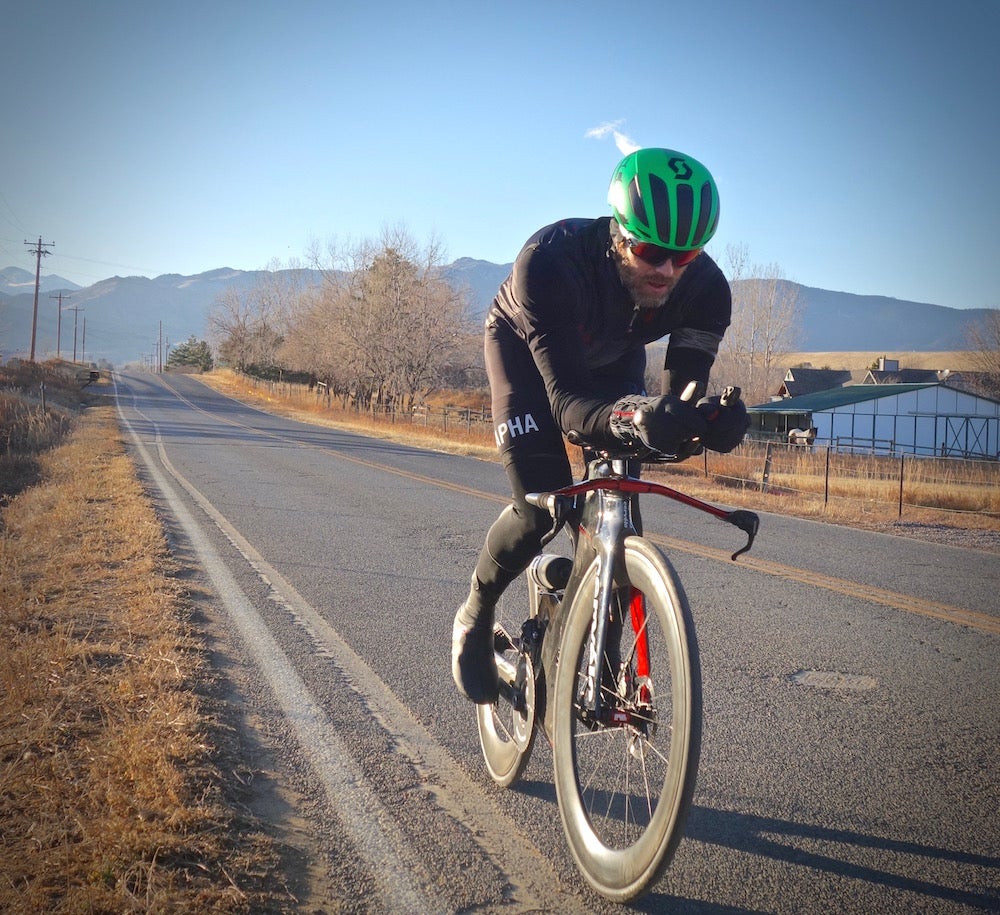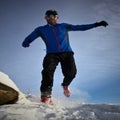Your Outdoor Winter Training Survival Guide

Plan, dress and thrive in the winter.
No matter how motivated you are to brave the weather, there is no getting around the fact that trying to get a run or ride outdoors in the winter takes more planning. What day is best for which workout? What should I wear? What will the trails/road be like? It’s a decision tree that can stop you in your tracks and make you decide to binge watch whatever you can find on Netflix. It doesn’t help that getting dressed to simply get outside can seem like preparing for deep sea diving. But for those of you who enjoy crisp, fresh air, here are some lessons Triathlete‘s Gear & Tech Editor AJ Johnson has learned from over 20 years of making the most of winter training.
Get An Accurate Weather Forecast
Checking the weather is a simple step and one that is mandatory to plan ahead and schedule appropriately. If Saturday is going to be 10 degrees colder than Sunday, switch your workouts accordingly. Of course this works best with an accurate forecast.

There are two dependable sources for weather forecasting. The first is noaa.gov/weather, which comes from the National Oceanic and Atmospheric Association. Their two day forecast is detailed and will give you a host of extra information like dew point, wind direction and cloud cover.
The second source is the Accuweather app. It’s not as robust as the NOAA, but it’s very, well, accurate. You can quickly scan the weather by the hour and get minute by minute alerts like- Rain starting in one hour.
Beyond the obvious metrics like the temperature, there are a few other things to look for. The most important is the wind. Wind is the biggest enemy to winter training as once it cuts through your clothing there is nothing you can do to stay warm. Checking what AccuWeather calls the RealFeel is a good indication of how the wind is effecting the temperature and will help you dress accordingly.
Choose Your Clothing Wisely

After checking the weather and actually stepping outside to gauge the temperature for yourself, it’s time to pick your clothing. There is a lot of personal preference with this, but some basics apply.
Layers are your friend. Not only do they help you shed heat and stay dry, but layering gives you options to add/remove items as you go. For winter workouts you should think of layers in two terms: insulation and protection (though some outer layers do both). For cycling, your base layer should be insulating one that is good at wicking away moisture. Your next layer should be another insulating one, but that is more focused on keeping you warm. Typically this is a long sleeve jersey if your cycling, or a mid weight. Finally, you’ll add your outer layer to provide protection from the wind and water. Sub stopping the wind from cutting through to your body is a major priority, this outer shell must perform well. Splurging a bit on a good jacket is worth it. It’s ideal to have both a light shell jacket and a heavier thermal one so you can pick accordingly.
For running, most of the above still applies, but you can often get away with only having two layers: again, one for insulation and one for protection.
Accessories Matter
A hat or headband is a must to help keep heat in. Make sure it covers your ears. Good gloves are an absolute must and a place to splurge on the best ones you can afford. Look for ones that are water and wind proof. Two pairs, a lighter weight set for temperatures in the forties and fifties and a more insulated pair for those frigid days is recommended.
Like your hands, if your feet aren’t happy, you aren’t happy. For cycling, you can use shoe covers to keep your feet dry and warm. However, if you are going to out in the cold on a regular basis, invest in a pair of winter specific shoes. For running, consider shoe gaiters to keep out the snow but like the advice above, if you will be running in the snow often, winter specific shoes are a better option.

Other Tips and Tricks
- About half an hour before you head out, bring your shoes, gloves, hat, etc. inside and place them on your home’s floor vents, if you have them, to pre-heat them. Putting on warm gloves, socks and shoes is almost luxurious.
- Try using tea, or any warm beverage, for your workout and use insulated bottles to keep them warm.
- If you’re not already wearing one, tuck a balaclava or headband in a pocket just in case.
- For windy and bitterly cold days, apply a hand salve to your cheeks to act as a protective barrier.
- Gas station microwaves can be used to thaw a frozen bottle in an emergency.
There is a certain satisfaction to getting outside on bad days. Just getting motivated to get out the door can be a struggle, but every pedal stroke or stride is a victory in itself. With a little research, planning, and good decisions you can not only get outside but enjoy the journey.